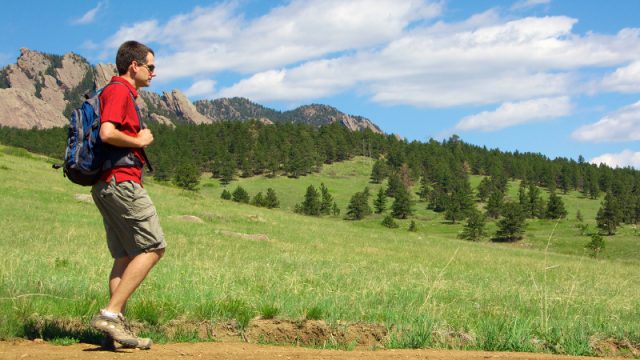During this time of staying in our homes far more than we prefer, we are all at risk of becoming too sedentary. We are being restricted from our favorite parks, gyms, and recreation centers, as well as our workplace and/or campus. Our regular, daily schedules have been turned upside down, which has caused our exercise routines to fall by the wayside. Screen use of all kinds have skyrocketed. Overall, we are moving far less.
First, let’s review the risks of sitting too much both on our bodies and minds. Secondly, we provide recommended approaches to movement and ideal intervals of movement, as well as options available to you to utilize from the comfort of your home, backyard and if possible, in nature!
Physical Impacts
Research has found that sitting for long periods of time is associated with a number of health concerns. This includes, but is not limited to high blood sugar, excess body fat around the waist, abnormal cholesterol levels, and poor sleep. Too much sitting for prolonged periods has been found to be associated with an increase risk of death from cardiovascular disease and cancer.
Extended sitting, such as in front of a screen while at your desk or on your couch, can be harmful. An analysis of multiple studies of sitting time and activity levels found that those who sat for more than 8 hours per day with no physical activity had a risk of dying similarly to those who are obese and smoke. On the contrary, this analysis found that 60-75 minutes of moderately intense physical activity per day countered the effects of too much sitting. The overall takeaway here is as long as you are moving moderately for an average of an hour per day, the amount of time you are sitting will have little effect on your mortality.
Mental Impacts
Sitting isn’t just a physical health risk, it’s a neurological risk as well. A recent UCLA study reports that people who are more sedentary have thinning in brain regions linked to memory, and even high-levels of exercise don’t seem to undo the effects of sitting too much. Slight, short-term drops in brain blood flow (occurs with sustained sitting) can temporarily cloud thinking and memory, while longer-term declines are linked to higher risks for some neurodegenerative diseases, including dementia and Alzheimer’s.
Tip: Getting up and strolling for just two minutes every half-hour reportedly prevents a decline in brain blood flow and may even increase it.
- Consider setting a timer, your computer or phone to beep at you every half-hour and get up.
- Walk around the house, take a walk around your backyard, up your street, or around your block.
New research demonstrates that sitting for longer than 6 hours a day not only carries a physical toll, but may also increase risks of mental health issues, such as anxiety and depression. Hitting the gym didn’t protect people from the effects of sitting. If people sat for most of the day, even if they were physically active and getting exercise, they still showed relatively higher rates of anxiety and depression symptoms than for those who sat for less than 3 hours a day.
Exercise & movement contributes to good health, which in turn helps us maintain sturdy immune systems. Exercise is well known for its mood-boosting abilities, and many of us need that. Let’s get moving!
Spending time in nature is good for us. Just the mere fact of walking on grass, hearing the birds singing, and the trees swaying ground us has significant impact on our health. It helps us feel less stress and once we return to activities that require more focus and concentration, we perform much better after walk in nature. Research finds that walking barefoot on grass has an emotionally grounding affect, such as improving sleep, lower stress, and pain. Now, take your shoes off and get out there!
We have many wonderful movement options available to us right in our own home, backyard, and in nature:
- Virtual exercise classes
- Stretching – watch this video for guidance on how to stretch your neck and shoulders.
- Walking up and down the stairs. Read about a man who climbed the height of Mt. Everest in his staircase!
- Be a kid again! Try a Hula Hoop Workout.
- Workouts in small spaces, include jumping rope, sit ups and push-ups.
- Free Workout Apps:
- Apps like Yoga for Beginners feature free 10 minute workouts that can boost energy and help flexibility and toning.
- The Daily Workouts app features a series of 10, 20, or 30-minute workouts targeted toward abs, arms, legs, or the full body.
- Nike Training Club features new daily workouts targeting lower body, upper body, core, etc., as well as a number of other workout videos. Workouts last from 15 to 45 minutes. Nike recently made all videos free and available to everyone.













